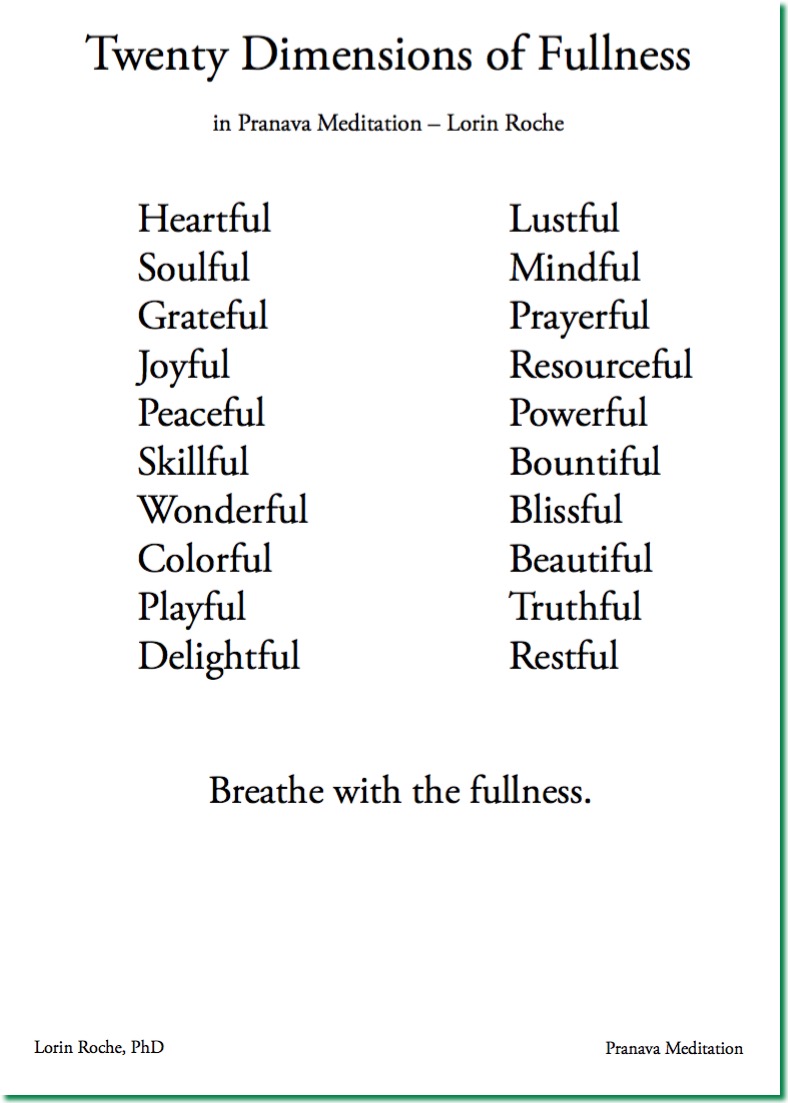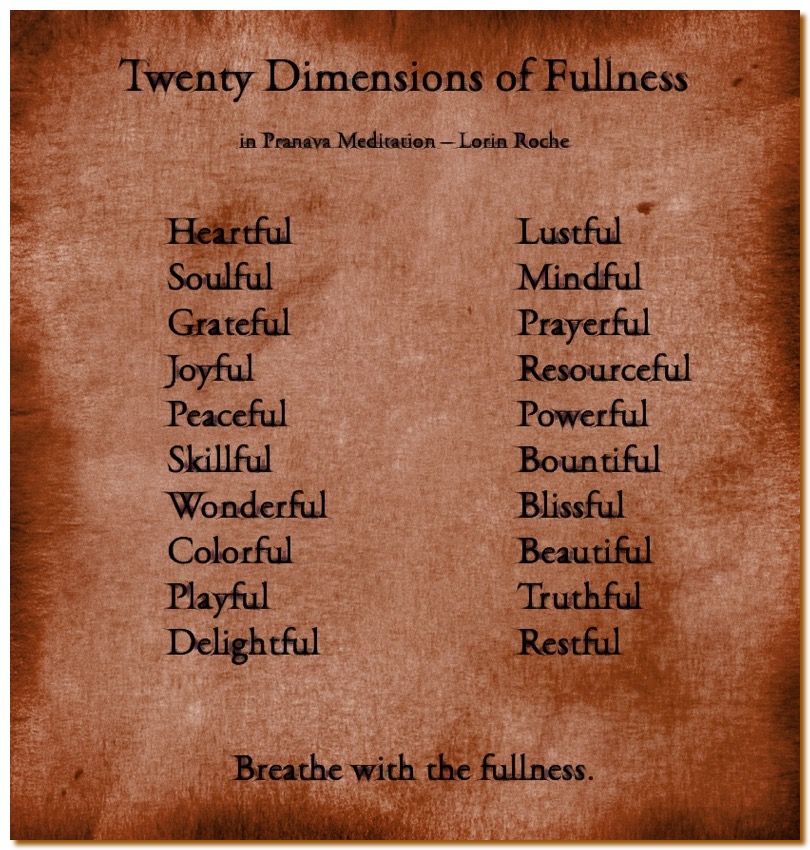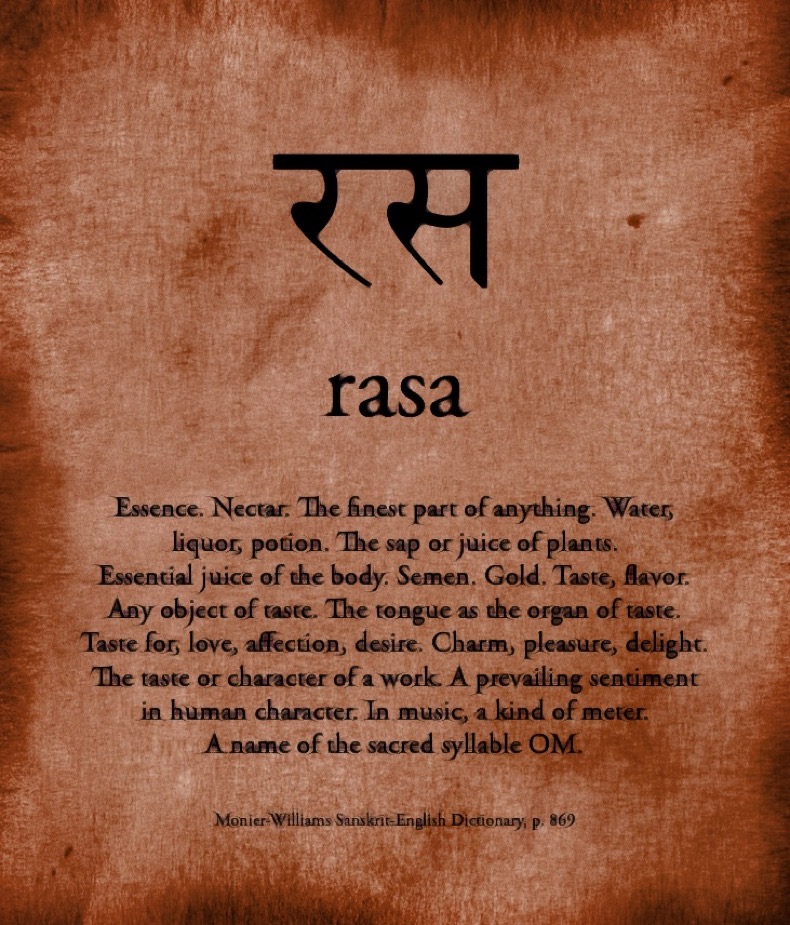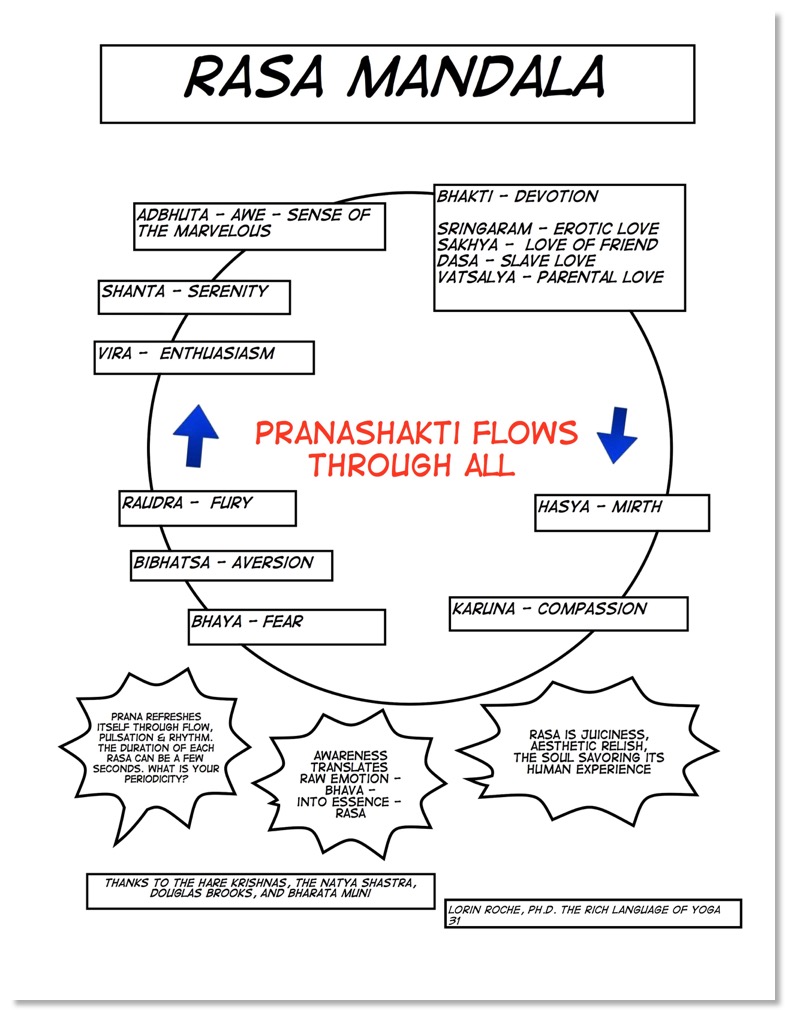In the play of consciousness and the body, awareness likes to cycle between all the tones.

or if you prefer

In practice this means that you may find yourself spontaneously moving from simple noticing, to gratefulness, to tearfulness, to heartfulness, to restfulness.
It can take quite a bit of giving - of time and attention - for any of us to catch up with all our thoughts and plans, and be able to simply enjoy ourselves. The pace of change in the world is so intense that we often feel that we "don't have time." We feel that we have a shortage of time. We are impoverished in our experience of time. This is a pervasive feeling among people who live in the first world. One of the surprise gifts of giving ourselves enough time, in the form of time to meditate, is the sense "I have enough time." So don't be concerned if for months your experience in meditation is none of the above, but rather Noise-ful. Worry-full. Or even Painful. Sometimes, to make a free inner space for our meditation, we need to clean out our closets, pay our bills, spend hours working on our to-do lists, writing letters or communicating with all the people in our lives, finishing unfinished conversations (if possible) and, as they say, getting our ducks in a row.
You want the overall tone of your meditation practice, whether it is breath awareness, body sensation awareness, mantra awareness, image or visualization, or any combination of these, to remind you of delightfulness, resourcefulness, gratefulness. That way, when you are immersed in worry-fulness and thoughtfulness and sorrowfulness, you have resources to rest in.
In the simplest terms, during meditation we cultivate the sense of savoring the texture of our lives, savoring the quality of pranashakti flowing through us in each moment.
In Sanskrit, one of the words for savoring is rasa.

When we are meditating, there is a tendency for life to refresh itself by rotating through all the different tastes of life. We may find ourselves irritated, remembering a painful delay or encounter, then this upgrades to anger, then changes to exhaustion, then relief, then restfulness. You could call this rotation through the rasas.
One of the incredible ideas from this meditation tradition is that during meditation we are savoring the texture of our life in our internal theater. The techniques of meditation amount to giving ourselves space, time, and attention - an attending audience. We are the actors, director, the stage, the lighting, the special effects creators, and the witness.

Say that during meditation you find yourself worrying about your kids. Perhaps you have a teenager who is acting out. You might then find yourself savoring the experience of FEAR, being terrified, at her latest exploit, and then FURY, wishing you could scream at her, and then AVERSION as you put yourself in her situation and experience the trouble she is in, and then you might experience a flash of humor, as you realize how ridiculous it all is, and then compassion. These intense flavors of life may surge through you every few seconds, over and over. Your whole meditation, every minute, may feel like watching an intense and scary movie. This is fine. What you may notice is that after meditation you feel much better and are more able to function with clarity. You may even be able to laugh at yourself, at how absurd your situation is.
Welcome intensity during meditation, as awareness savors all the thoughts and feelings and sensations and mental imagery associated with your life and love.
In your notebook, make your own list of the fullnesses, and then look at each one and breathe with it for four or five breaths.
On another page, and probably on a different day, make a list in your journal of the major emotions or rasas and breathe a few breaths with each one.
In this way, train yourself to notice and welcome and savor each of these energies of life as they appear in your meditation, even if they only flash through for a few seconds here and there.
You could also use the list of emotions here in the emotion page.
Short take: give up any idea of imposing silence on your mind and heart. This only leads to stagnation. Giving attention to the passions during meditation leads to a sense of peacefulness underlying it all.
You can think of the emotions as internal asanas that you flow through in meditation. The aim is not to stay permanently in one weird pose, but rather to flow through them all and find your poise.

or if you prefer

In practice this means that you may find yourself spontaneously moving from simple noticing, to gratefulness, to tearfulness, to heartfulness, to restfulness.
It can take quite a bit of giving - of time and attention - for any of us to catch up with all our thoughts and plans, and be able to simply enjoy ourselves. The pace of change in the world is so intense that we often feel that we "don't have time." We feel that we have a shortage of time. We are impoverished in our experience of time. This is a pervasive feeling among people who live in the first world. One of the surprise gifts of giving ourselves enough time, in the form of time to meditate, is the sense "I have enough time." So don't be concerned if for months your experience in meditation is none of the above, but rather Noise-ful. Worry-full. Or even Painful. Sometimes, to make a free inner space for our meditation, we need to clean out our closets, pay our bills, spend hours working on our to-do lists, writing letters or communicating with all the people in our lives, finishing unfinished conversations (if possible) and, as they say, getting our ducks in a row.
You want the overall tone of your meditation practice, whether it is breath awareness, body sensation awareness, mantra awareness, image or visualization, or any combination of these, to remind you of delightfulness, resourcefulness, gratefulness. That way, when you are immersed in worry-fulness and thoughtfulness and sorrowfulness, you have resources to rest in.
In the simplest terms, during meditation we cultivate the sense of savoring the texture of our lives, savoring the quality of pranashakti flowing through us in each moment.
In Sanskrit, one of the words for savoring is rasa.

When we are meditating, there is a tendency for life to refresh itself by rotating through all the different tastes of life. We may find ourselves irritated, remembering a painful delay or encounter, then this upgrades to anger, then changes to exhaustion, then relief, then restfulness. You could call this rotation through the rasas.
One of the incredible ideas from this meditation tradition is that during meditation we are savoring the texture of our life in our internal theater. The techniques of meditation amount to giving ourselves space, time, and attention - an attending audience. We are the actors, director, the stage, the lighting, the special effects creators, and the witness.

Say that during meditation you find yourself worrying about your kids. Perhaps you have a teenager who is acting out. You might then find yourself savoring the experience of FEAR, being terrified, at her latest exploit, and then FURY, wishing you could scream at her, and then AVERSION as you put yourself in her situation and experience the trouble she is in, and then you might experience a flash of humor, as you realize how ridiculous it all is, and then compassion. These intense flavors of life may surge through you every few seconds, over and over. Your whole meditation, every minute, may feel like watching an intense and scary movie. This is fine. What you may notice is that after meditation you feel much better and are more able to function with clarity. You may even be able to laugh at yourself, at how absurd your situation is.
Welcome intensity during meditation, as awareness savors all the thoughts and feelings and sensations and mental imagery associated with your life and love.
Awareness training exercises and suggestions
In your notebook, make your own list of the fullnesses, and then look at each one and breathe with it for four or five breaths.
- Joyful
- Peaceful
- Wrathful
- Fearful
- Colorful
- Playful
- Truthful
- Lustful
- Restful
On another page, and probably on a different day, make a list in your journal of the major emotions or rasas and breathe a few breaths with each one.
- Anger (wrath, fury, irritation)
- Sorrow (grief, discouragement)
- Disgust (aversion, turning away)
- Enthusiasm (courage, vital interest)
- Erotic love
- Love of friends
- Love of children
- Humor
- Wonder (curiosity, awe)
- Peacefulness (relaxation, ease)
In this way, train yourself to notice and welcome and savor each of these energies of life as they appear in your meditation, even if they only flash through for a few seconds here and there.
You could also use the list of emotions here in the emotion page.
Short take: give up any idea of imposing silence on your mind and heart. This only leads to stagnation. Giving attention to the passions during meditation leads to a sense of peacefulness underlying it all.
You can think of the emotions as internal asanas that you flow through in meditation. The aim is not to stay permanently in one weird pose, but rather to flow through them all and find your poise.